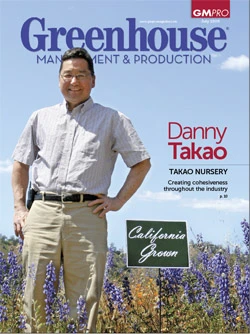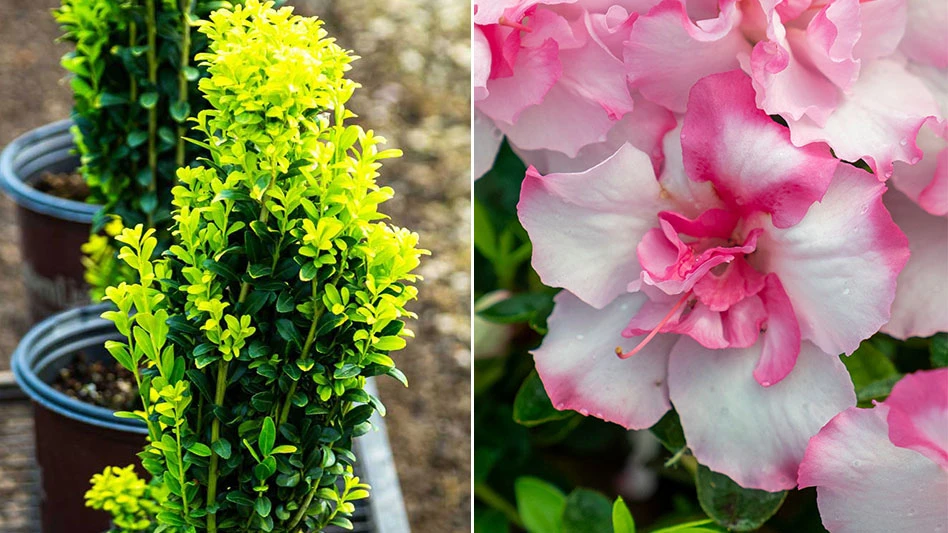 In the mainstream of pesticide classifications there are generally two categories of pesticides (insecticides and miticides) used in ornamental plant production: conventional and alternative. However, it is often difficult to distinguish between these two categories since an alternative pesticide may be considered conventional and vice versa. In general, conventional pesticides are those commonly belonging, although not limited, to the following “older” chemical classes: organophosphate, carbamate and pyrethroid.
In the mainstream of pesticide classifications there are generally two categories of pesticides (insecticides and miticides) used in ornamental plant production: conventional and alternative. However, it is often difficult to distinguish between these two categories since an alternative pesticide may be considered conventional and vice versa. In general, conventional pesticides are those commonly belonging, although not limited, to the following “older” chemical classes: organophosphate, carbamate and pyrethroid.
Are the neonicotinoid-based insecticides such as imidacloprid (Marathon/Merit), thiamethoxam (Flagship/Meridian), acetamiprid (TriStar) and dinotefuran (Safari) considered conventional or alternative pesticides? There are no clear-cut distinctions since these terms are not only objective, but are often subjective.
When resistance is suggested as the potential reason for the failure to provide control of a given insect or mite pest population, it is generally directed toward conventional pesticides. Numerous scientific publications refer to insects and mites developing resistance to conventional pesticides, and that alternative pesticides (i.e., biopesticides or biorationals) are somewhat immune to insect and/or mite populations developing resistance. This could not be further from the truth.
Insect and mite pests don’t know the difference between a conventional and alternative pesticide. They do whatever it takes to survive and evolve in order to sustain existing populations.
Alternatives and resistance
Alternative pesticides may include insect growth regulators, insecticidal soaps, horticultural oils, feeding blockers, beneficial bacteria and fungi and other micro-organisms. An insect or mite pest may take longer to develop resistance to an alternative pesticide because the product has broad or non-specific modes of action in which they are active on either multiple target sites or they attack a variety of enzymatic or metabolic systems.
The consistent use of any pesticide or pesticides with similar modes of action, regardless of whether the product is a conventional or alternative pesticide, can lead to insect and mite populations developing resistance. The rate of resistance development is closely associated with the dosage used and frequency of pesticide applications.
Here are some examples of alternative pesticide resistance.
• Western flower thrips to spinosad (Conserve).
• Leafminer to cyromazine (Citation), abamectin (Avid) and spinosad (Conserve).
• Twospotted spider mite to clofentezine (Ovation), hexythiazox (Hexygon), abamectin (Avid) and etoxazole (TetraSan).
• Greenhouse whitefly to buprofezin (Talus).
• Sweet potato whitefly B-biotype to pyriproxyfen (Distance).
• Sweet potato whitefly Q-biotype to pyriproxyfen (Distance) and buprofezin (Talus).
Reasons for resistance
There are a number of reasons why insect and mite pests may develop resistance to any pesticide including alternatives. Buprofezin (Talus), for example, has been demonstrated to be less effective against greenhouse whitefly, which may be associated with the high volatility of this active ingredient resulting in inadvertent “selection pressure” and thus possibly resistance.
Avoid resistance
Be aware of misleading claims stating insect or mite pests cannot develop resistance to certain pesticides. It is important to understand the biology and life cycle of pests. It’s equally important to rotate both conventional and alternative pesticides to avoid exposing pest populations to similar modes of action. This will preserve the availability and longevity of existing products.
Raymond A. Cloyd is associate professor/ext. specialist in ornamental entomology IPM, K-State Research and Extension, (785) 532-4750; rcloyd@ksu.edu.

Explore the July 2009 Issue
Check out more from this issue and find your next story to read.
Latest from Greenhouse Management
- On the rebound
- A winning gameplan for spring
- Veseris expands in turf and ornamental with acquisition of Tessman and Lynde companies
- BioTherm launches Ultimate Grower Climate Control System
- Jess Lyga joins Bailey sales team
- Jimmy Toledo
- Green Gear: Work boots and long-range WiFi hub
- Pantone announces its 2025 Color of the Year





